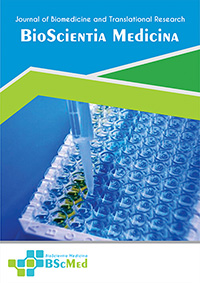Main Article Content
Abstract
Background: Acupuncture, a cornerstone of Traditional Chinese Medicine (TCM), is increasingly utilized for cardiovascular diseases (CVDs). A central tenet is acupoint specificity – the hypothesis that stimulating specific acupoints yields distinct therapeutic effects compared to non-specific points or sham interventions. However, the empirical evidence supporting acupoint specificity for cardiovascular outcomes remains debated. This systematic review aimed to evaluate the current evidence regarding the impact of acupoint specificity on clinically relevant cardiovascular outcomes.
Methods: A systematic search was conducted in major biomedical databases (PubMed, Embase, Cochrane Library, Scopus) for randomized controlled trials (RCTs) published between January 2014 and December 2024. Studies were included if they compared acupuncture at specific, predefined acupoints relevant to cardiovascular conditions against a control group involving sham acupuncture (non-penetrating, superficial needling at non-acupoints, or needling at irrelevant acupoints) or minimal acupuncture. The primary outcomes included changes in blood pressure (systolic and diastolic), heart rate variability (HRV) parameters, angina frequency/severity, and major adverse cardiovascular events (MACE). Study quality was assessed using the Cochrane Risk of Bias tool.
Results: Seven RCTs involving 850 participants met the inclusion criteria, addressing hypertension (n=3), stable angina (n=2), heart failure support (n=1), and HRV modulation in healthy subjects (n=1). Three studies (one hypertension, one angina, one HRV) suggested statistically significant benefits of specific acupoint stimulation (such as PC6, ST36, LR3) over sham controls for primary outcomes (such as greater reduction in systolic blood pressure, reduced angina frequency, specific HRV modulation). Heterogeneity was substantial across studies, even within the same condition, particularly concerning acupoint selection, stimulation parameters, and control group design.
Conclusion: The evidence supporting clinically significant acupoint specificity for cardiovascular outcomes remains inconclusive and inconsistent. While some studies suggest potential benefits of stimulating specific points like PC6 or ST36 compared to sham interventions, others fail to demonstrate superiority. High-quality, rigorously designed RCTs with standardized protocols, appropriate sham controls, and adequate sample sizes are imperative to clarify the role of acupoint specificity in acupuncture's cardiovascular effects.
Keywords
Article Details
As our aim is to disseminate original research article, hence the publishing right is a necessary one. The publishing right is needed in order to reach the agreement between the author and publisher. As the journal is fully open access, the authors will sign an exclusive license agreement.
The authors have the right to:
- Share their article in the same ways permitted to third parties under the relevant user license.
- Retain copyright, patent, trademark and other intellectual property rights including research data.
- Proper attribution and credit for the published work.
For the open access article, the publisher is granted to the following right.
- The non-exclusive right to publish the article and grant right to others.
- For the published article, the publisher applied for the Creative Commons Attribution-NonCommercial-ShareAlike 4.0 International License.





